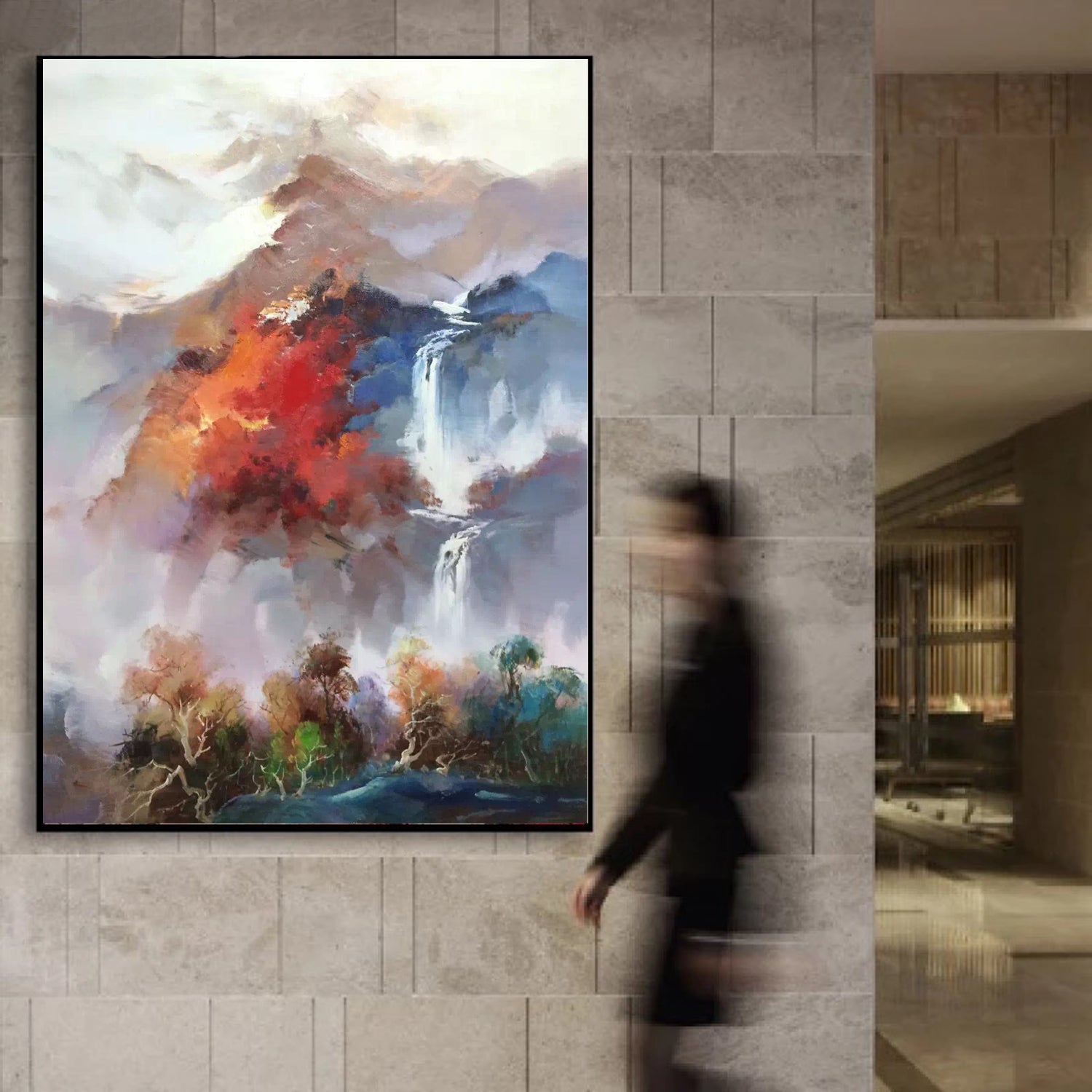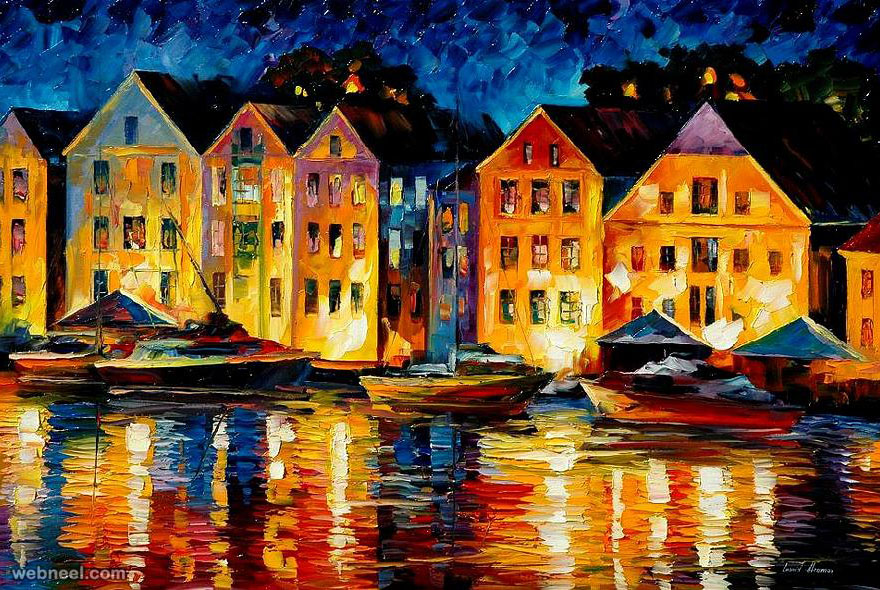Explore Emotive Portrait Oil Paintings for Sale
Explore Emotive Portrait Oil Paintings for Sale
Blog Article
Exploring All Concerning Oil Paints: A Guide to Understanding Their Elegance and Worth
Oil paintings have actually mesmerized target markets for centuries, offering a peek into the creative mastery of numerous periods. Their abundant history is linked with ingenious techniques and extensive psychological expression. Comprehending the products and approaches behind these art work can boost recognition. In addition, the marketplace for oil paints provides possibilities for collection agencies and capitalists alike. As one discovers this remarkable globe, the concern arises: what makes an oil paint truly beneficial?
The Background of Oil Paint: A Trip Via Time
Oil paint has origins that date back to ancient times, it genuinely grew during the Renaissance, when artists uncovered its convenience and abundant shade potential. Early instances can be mapped to the 7th century, with strategies evolving significantly across societies. The tool ended up being popular in Northern Europe in the 15th century, especially with the works of musicians like Jan van Eyck, who originated its use for detailed realistic look and dynamic tones. This period marked a separation from tempera paints, enabling greater depth and structure. As oil paint spread, it affected plenty of musicians, bring about work of arts by renowned figures such as Leonardo da Vinci and Rembrandt. The tool's heritage continues, forming the art globe well right into modern-day times.
Comprehending Oil Repaints: Products and Techniques
As musicians discover the globe of oil paints, they come across a varied array of products and strategies that specify this medium. The primary elements of oil paint consist of pigments, which give color, and drying oils, such as linseed, that bind the pigments and assist in application. Different ingredients can modify the paint's texture and drying out time, improving versatility. Methods like glazing, where clear layers are accumulated, and impasto, which involves applying thick paint, enable different visual effects. Additionally, making use of brushes, combination knives, and even fingers can create distinct structures and surfaces. Comprehending these materials and methods enables artists to fully express their creativity and attain the wanted effect in their artwork.
The Function of Color in Oil Paintings
Shade plays a crucial function in oil paintings, affecting both visual charm and psychological resonance. Understanding shade theory fundamentals, consisting of the partnerships in between shades, can boost an artist's ability to share state of mind and atmosphere. In addition, grasping color blending methods allows for higher depth and splendor in a paint's combination.

Shade Concept Fundamentals
Understanding shade concept is vital for artists dealing with oil paints, as it develops the foundation for creating visually interesting and unified structures. Color concept encompasses the research of just how colors communicate, the color wheel, and the connections in between primary, additional, and tertiary colors. Artists use complementary shades to enhance contrasts and develop focal points, while analogous colors promote unity and cohesiveness within a piece. Furthermore, the concepts of cozy and cool shades influence the understanding of depth and area in a painting. Comprehending these principles enables musicians to manipulate color properly, assisting the viewer's eye and connecting their designated message. Proficiency of color concept eventually improves an artist's capacity to communicate feelings and ideas via their work.
Psychological Impact of Shade
The psychological impact of shade in oil paints plays a vital role in just how viewers regard and connect with artwork. Shades stimulate particular feelings and moods, influencing the viewer's emotional state. Warm shades like oranges and reds can develop a feeling of heat and power, while trendy tones such as blues and greens frequently evoke calmness or introspection. Artists strategically choose color combinations to improve narrative aspects, assisting the target market's emotional journey. The saturation and contrast of colors further enhance these effects, attracting focus and developing focus. Inevitably, the interaction of colors in oil paintings not just improves their aesthetic appeal yet also acts as an effective tool for psychological expression, improving the visitor's experience and analysis.
Shade Combining Techniques
While many aspects of oil paint add to the total make-up, grasping shade mixing methods is crucial for attaining wanted results and deepness. Color mixing can be come close to with various methods, including the additive and subtractive processes. Additive blending entails integrating colors of light, while subtractive blending depends on pigments, where shades blend to produce brand-new shades. Musicians often make use of a restricted palette to develop harmonious jobs, comprehending the relationships in between primary, second, and tertiary colors. Strategies such as glazing and scumbling even more boost deepness and luminosity. By masterfully mixing colors, a musician can evoke feelings, create centerpieces, and achieve a feeling of realistic look, eventually boosting the painting's emotional and aesthetic impact.
Famous Oil Painters and Their Iconic Works

Famed for their proficiency of color and method, oil painters have actually created several of the most celebrated artworks in background. Prominent artists like Vincent van Gogh mesmerized target markets with his stirring brushwork in "Starry Night," while Claude Monet's "Perception, Sunup" prepared for Impressionism. Leonardo da Vinci's "Mona Lisa" continues to be a long-lasting icon of imaginative wizard, showcasing his ability in recording human expression. Meanwhile, Rembrandt's "The Night Watch" highlights his cutting-edge use light and darkness. Various other notable figures include Pablo Picasso, who transformed contemporary art with his vibrant trial and error in jobs like "Les Demoiselles d'Avignon," and Georgia O'Keeffe, whose vibrant depictions of landscapes and flowers helped define American modernism. Each artist's distinct style contributed considerably to the oil painting landscape.
Exactly how to Review the Quality of an Oil Paint
Examining the quality of an oil paint entails a careful assessment of craftsmanship methods, as well as an analysis of shade and structure. Observing brushwork, layering, and the application of paint can reveal the musician's skill degree. In addition, the interplay of colors and the general arrangement of components add significantly to the painting's aesthetic worth.
Analyzing Workmanship Methods
A careful evaluation of workmanship techniques is essential for establishing the high quality of an oil paint. Evaluators need to first check out the application of paint; thick, textured brushstrokes might suggest a knowledgeable hand, while extremely uniform applications might indicate a lack of deepness. oil paintings for sale. The layering technique is likewise vital; the existence of lusters and varied density can boost luminosity and complexity. In addition, the high quality of the products utilized, such as the canvas and pigments, plays a significant duty in longevity and general visual. Interest to detail in aspects like sides and changes between colors mirrors the musician's commitment to their craft. Eventually, these methods add to the painting's emotional effect and market price, working as indicators of the artist's ability and intent
Examining Color and Composition
While evaluating the top quality of an oil paint, one have to focus on the interplay of color and structure, as these aspects are basic to the art work's total influence. Color choices can establish and stimulate feelings state of mind; as a result, the musician's scheme need to be examined for harmony and contrast. A healthy structure routes the customer's eye and develops a feeling of unity. Artists commonly utilize methods like the policy of thirds or leading lines to boost visual interest. Additionally, making use of light and shadow can include depth, boosting the three-dimensionality of the paint. Inevitably, an effective oil paint weds shade and composition, engaging the customer and welcoming a much deeper appreciation of the artist's vision and technique.
Caring for and Preserving Oil Paintings
Appropriate care and preservation of oil paints is necessary for keeping their honesty and durability. To secure these artworks, it is essential to present them away from direct sunlight, which can trigger fading and discoloration. Maintaining a secure setting with controlled temperature level and moisture more help in stopping damage. Cleansing must be done gently making use of a soft, completely dry cloth, preventing any type of extreme chemicals that might hurt the paint or varnish. Normal inspections for indicators of deterioration, such as breaking or flaking, are recommended. When delivering or keeping oil paintings, correct extra padding and framing are required to avoid physical damage. Ultimately, thorough treatment adds to the aesthetic appeal and worth of oil paints in time.
The Marketplace for Oil Paintings: Investing and accumulating
Understanding the market characteristics for oil paints is crucial for collectors and capitalists alike. The worth of these art work is influenced by different factors, including the musician's reputation, historic significance, and present fads. Collectors typically look for items that resonate personally while thinking about prospective admiration in worth. Galleries and auctions offer as main places for trading, with prices varying based upon need and rarity. Purchasing oil paintings calls for study right into the market, along with an understanding of authenticity and provenance. Furthermore, arising artists might use opportunities for considerable returns, while developed names can command high costs. On the whole, a strategic approach to gathering can produce both visual pleasure and monetary incentives.

Frequently Asked Questions
What Are the Environmental Impacts of Oil Paint Materials?
The ecological impacts of oil painting materials include the release of unstable natural substances (VOCs), harmful waste generation, and resource extraction for pigments. These elements add to air pollution and eco-friendly degradation, raising issues among ecologically mindful artists and consumers.
Exactly How Do Different Canvases Affect Oil Painting Results?
Different canvases affect oil paint results significantly. Surface, absorbency, and structure high quality can alter paint application, drying times, and shade vibrancy. Musicians typically select particular canvases to achieve desired results and boost their creative expression.
Can Oil Paintings Be Restored if Damaged?
If harmed, Oil paints can indeed be restored. Expert conservators use numerous strategies to repair tears, clean surfaces, and address discoloration, making certain that the art work retains its original charm and value for future generations.
What Are the Indications of an Original Oil Paint?
The indications of an original oil paint include noticeable brush strokes, structure variations, and an irregular canvas weave (oil paintings for sale). Furthermore, authenticity might be confirmed via provenance, signatures, and the visibility of a varnish layer distinct to oil tools
Exactly How Has Technology Influenced Modern Oil Paint Techniques?
Innovation has actually greatly influenced modern-day oil painting strategies by introducing electronic tools for preparation, improved materials for structure and longevity, and on-line systems for selling and sharing art, therefore broadening musicians' creative possibilities and audience get to. Oil painting has roots that date back click here to ancient times, it genuinely thrived during the Renaissance, when musicians found its flexibility and rich shade capacity. The psychological influence of shade in oil paintings plays a crucial duty in just how audiences attach and regard with art work. While several elements of oil painting add to the general composition, understanding color mixing methods is necessary for attaining preferred effects and deepness. Evaluating the quality of an oil painting involves a cautious evaluation of craftsmanship techniques, as well as an evaluation of shade and composition. While assessing the high quality of an oil paint, one must focus on the interplay of shade and make-up, as these components are basic to the art work's total impact.
Report this page